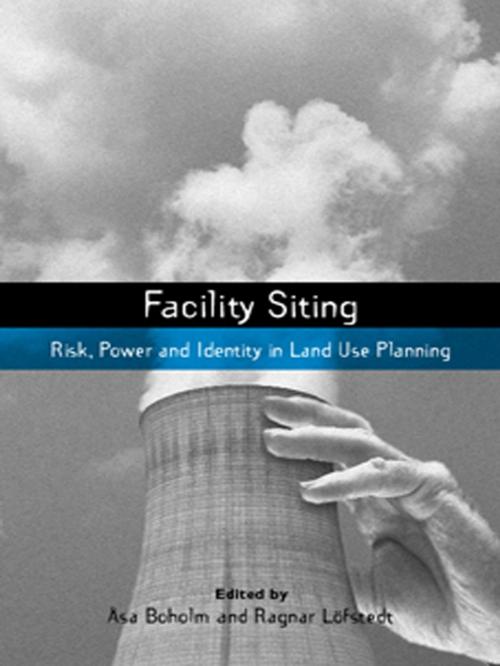Facility Siting
Risk, Power and Identity in Land Use Planning
Business & Finance, Industries & Professions, Insurance| Author: | ISBN: | 9781136565953 | |
| Publisher: | Taylor and Francis | Publication: | June 17, 2013 |
| Imprint: | Routledge | Language: | English |
| Author: | |
| ISBN: | 9781136565953 |
| Publisher: | Taylor and Francis |
| Publication: | June 17, 2013 |
| Imprint: | Routledge |
| Language: | English |
From dams to landfill sites, and power plants to radioactive waste repositories, the siting of facilities is a veritable minefield of conflicts involving industry, planners, authorities, NGOs and citizens. This penetrating volume examines risk, power and identity in contests over the siting of infrastructure and industrial facilities. Going beyond nimby-ism, experts in a variety of fields bring a multiperspective analysis from science, law and media to case studies from the UK, USA and Europe, and expose the political and cultural dimensions of siting conflicts. In the process they show how place attachment and notions of landscape and local identity play a prominent role in resistance to 'development'. Topics covered include the importance of context in siting controversies, siting methods and social representation, siting conflicts, the importance of institutional thinking in facility siting, risk, industrial encroachment and the sense of place, siting and sacred places, and law and fairness. This book is essential reading for academics in social sciences, policy, planning, law and risk; policy makers, planners and decision makers at all levels of government; business and industry, particularly energy generation, including nuclear and renewables, transportation and large dams; risk assessment professionals; and NGOs and activists.
From dams to landfill sites, and power plants to radioactive waste repositories, the siting of facilities is a veritable minefield of conflicts involving industry, planners, authorities, NGOs and citizens. This penetrating volume examines risk, power and identity in contests over the siting of infrastructure and industrial facilities. Going beyond nimby-ism, experts in a variety of fields bring a multiperspective analysis from science, law and media to case studies from the UK, USA and Europe, and expose the political and cultural dimensions of siting conflicts. In the process they show how place attachment and notions of landscape and local identity play a prominent role in resistance to 'development'. Topics covered include the importance of context in siting controversies, siting methods and social representation, siting conflicts, the importance of institutional thinking in facility siting, risk, industrial encroachment and the sense of place, siting and sacred places, and law and fairness. This book is essential reading for academics in social sciences, policy, planning, law and risk; policy makers, planners and decision makers at all levels of government; business and industry, particularly energy generation, including nuclear and renewables, transportation and large dams; risk assessment professionals; and NGOs and activists.















